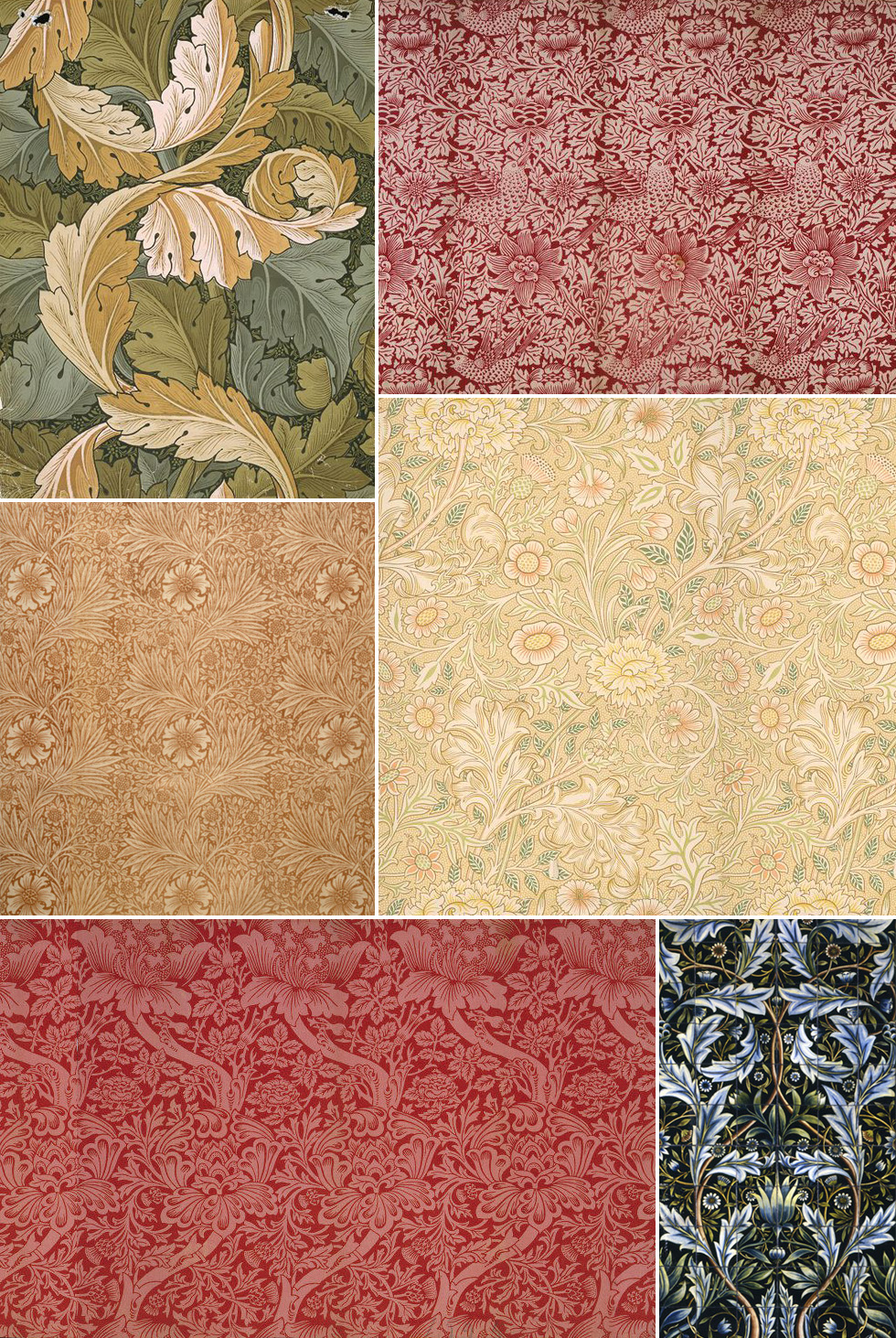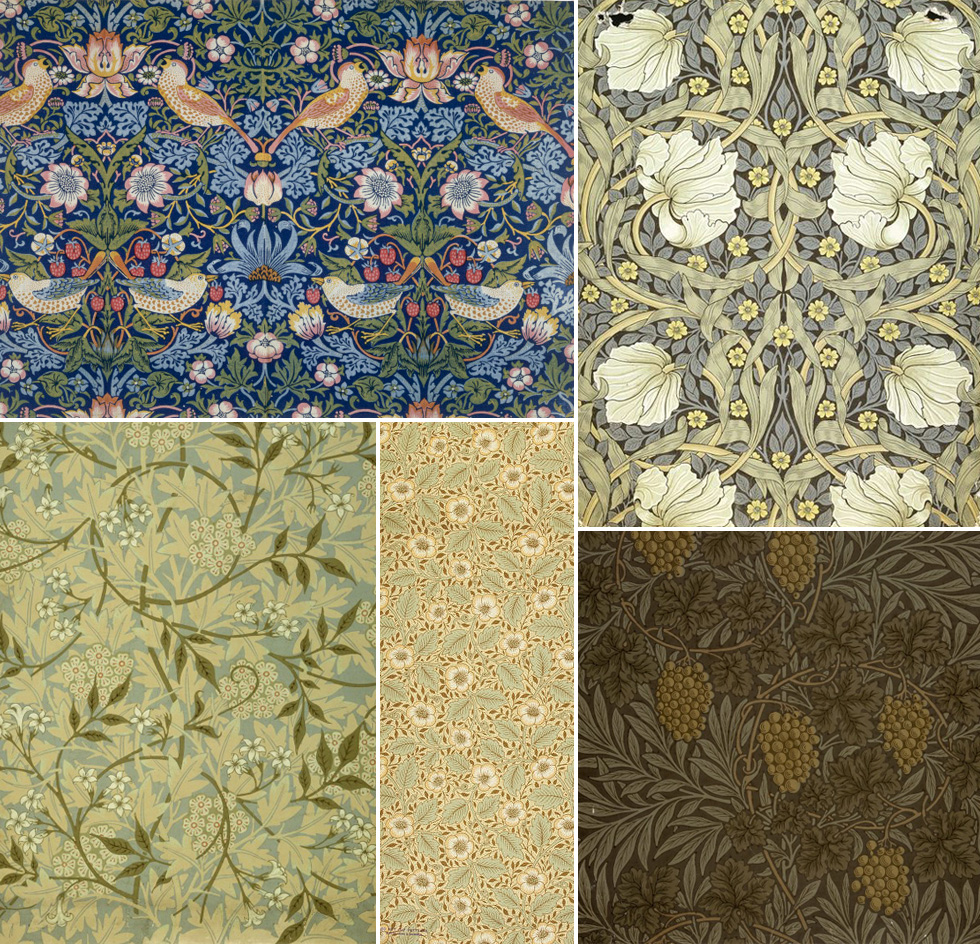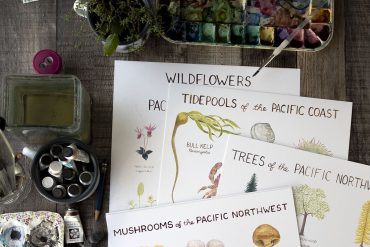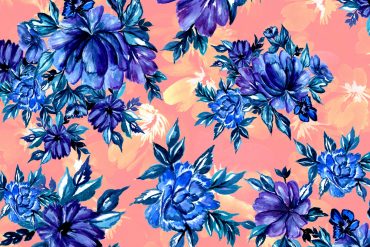Series on the history of surface design by Julie Gibbons.
William Morris (1834-1896) is best known these days as a designer of sumptuous patterns for textiles and wallpaper, but he was so much more than that.
Also known as a writer and poet, translator, social activist, printer and dyer, Morris originally trained as an architect and had early ambitions to become a painter.
His patterns for textiles and wallpaper were revolutionary at the time, and quite at odds with the fashion for illusion and exaggeration. They were distinctive for their soft, flat colours, their stylised natural forms, their symmetry and their sense of order. He created structure through his designs by building strong, rhythmic and fluid lines from the shapes of leaves, vines and branches, and he frequently superimposed the main pattern over a smaller, recessive background pattern to fill the design space.
In fact, the structure of the design was a fundamental for him. “No amount of delicacy is too great in drawing the curves of the pattern, no amount of care in getting the lines right from the first can be thrown away, for beauty of detail cannot afterwards cure any shortcoming of this.”

Morris grew up in England, the son of a wealthy middle-class family. While at Oxford, he became good friends with artists from the Pre-Raphaelite group, including Edward Burne-Jones and later, Dante Gabriel Rossetti. This group was dedicated to reforming the arts, and upheld the virtues of Gothic and medieval styles for their rich colour and abundant detail. The Pre-Raphaelites’ ideas profoundly informed Morris’ views on art.
Around 1860 he engaged his friend and architect Phillip Webb to design a new house for him and his wife, Jane Burden. Then, together with some of his Pre-Raphaelite friends he furnished and decorated the new abode. It was such an enjoyable experience that they decided to set up their own company in London supplying a range of domestic furnishings – embroidery, tableware, furniture, stained glass and tiles (initially called Morris, Marshall, Faulkner & Co – later simply Morris & Co). It was also because of his inability to find wallpapers that he liked enough for his own home that Morris turned his hand to designing his own, and these were added to the company catalogue.
His aesthetic was influenced by his political viewpoint as well. An outspoken socialist, Morris spoke and wrote on the subject throughout the course of his life and was quite influential in the history of Socialism in England. Socialism in art translated for him as the equality of art, craft and design, the value of good craftsmanship, and the idea that good design should be available to everyone and not just the wealthy. In reality, those ideas couldn’t work together within a capitalist society and this became an increasingly painful philosophical struggle for him, when it was clear that his workshop’s beautifully handcrafted goods could only be afforded by the wealthy bourgeoisie.
Morris had a deep respect for craftsmanship, and besides researching, using and promoting traditional methods of dyeing and printing, he was instrumental in reviving a number of old techniques such as block printing. He also utilised techniques from other cultures; the most important of these was the indigo discharge method of the East, which he used often and admired it for its crispness and detail. He also rejected the harsh chemical of aniline dyes, preferring the richness of natural vegetable dyes.

In between his political speaking engagements and his work with Morris & Co, he found time to work with a colleague translating Icelandic folklore tales and medieval English texts, as well as write numerous poems, collections of short stories and novels. Morris founded the Kelmscott Press in 1891, which produced a masterpiece of book design – an illustrated edition of the Works of Geoffrey Chaucer. At the time of his death, he was remembered most widely for his writing, especially the acclaimed utopian fiction, News from Nowhere.
His textile designs continue to be incredibly popular and many of them remain in production today.












